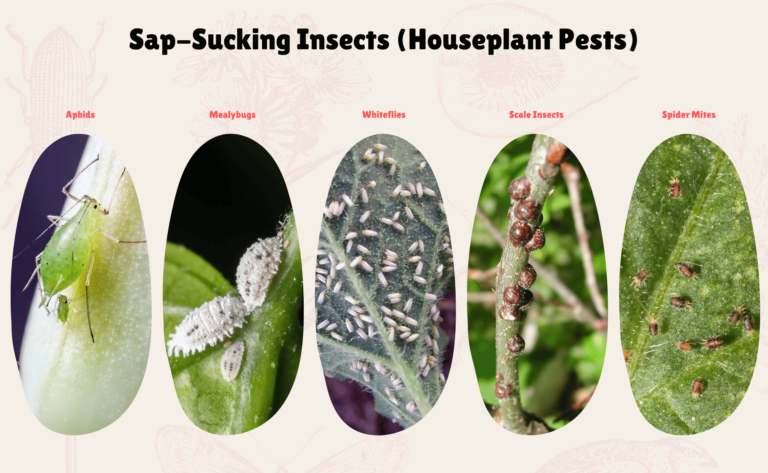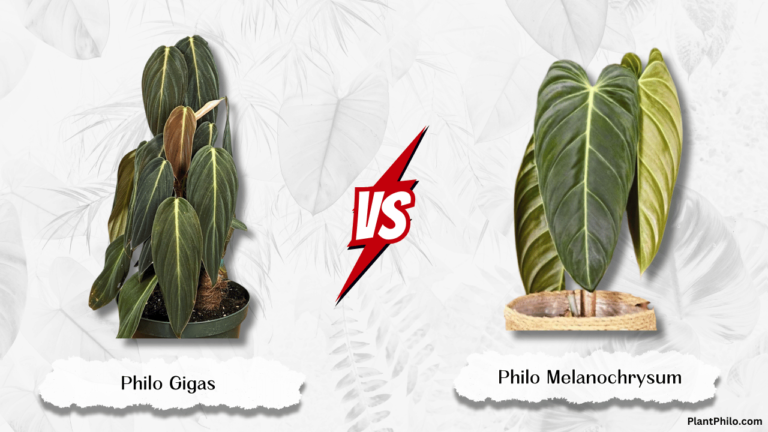Pink Princess Burgundy Care Tips and Growing Guide
When I first heard about the Pink Princess Burgundy, I wanted to know what set this plant apart from other philodendrons.
It turns out that the Pink Princess Burgundy is a type of philodendron known for having deep, dark leaves, often lacking the signature pink variegation of the original Pink Princess.
This feature makes it a fascinating choice for collectors who appreciate rich colors and unique foliage.
As I did my research, I found that the Pink Princess Burgundy is sometimes called a “reverted” Pink Princess because its leaves shift from bright variegation to mostly burgundy tones.
Many plant lovers seek it out for its striking appearance and the subtle changes its leaves show over time.
If you’ve been wondering whether this philodendron is right for your collection, keep reading as I share what I’ve learned about care tips, appearance, and why this plant is getting so much attention among plant enthusiasts.
Overview of Pink Princess Burgundy

The Pink Princess Burgundy is a rare philodendron that stands out for its unique foliage.
I appreciate this plant for its deep burgundy leaves accented with splashes of pink variegation and its easy care compared to other collector plants.
Origins and History
The Pink Princess Burgundy is a cultivar from the Philodendron family, which is native to the rainforests of South America.
Over the years, plant enthusiasts began crossing philodendrons to create new hybrids with unusual leaf colors.
This plant appeared as a result of these hybridization efforts.
The “Burgundy” name comes from the dark, wine-colored leaves the plant develops, which is a result of genetic variation and selective breeding.
Nurseries and collectors in the last decade have popularized this plant.
Its vibrant, variegated appearance drew interest across social media, further boosting its presence in the indoor plant market.
Key Features and Variegation
My favorite feature of the Pink Princess Burgundy is the striking combination of burgundy and pink that makes each leaf unique.
The main characteristics include:
- Heart-shaped leaves: Broad, glossy, and often tinged with both dark burgundy and bubblegum pink.
- Pink variegation: This is unpredictable; some leaves are mostly burgundy with slight pink patches, while others can have large areas of pink. Bright, indirect light helps the pink color develop more clearly.
- Growth habit: The plant climbs if given support, which makes it perfect for moss poles or trellises. It grows moderately fast with the right conditions.
Compared to the standard Pink Princess, the Burgundy version has deeper, darker foliage.
Its subtle beauty and reliable leaf color offer a classy look indoors, as noted in this comparison of Burgundy Princess vs. Pink Princess.
Popular Uses
I often use the Pink Princess Burgundy as a decorative statement piece in my home.
Its bold colors draw attention on a shelf or as part of a plant display.
This philodendron adapts well to most indoor areas with bright, indirect light.
Offices, living rooms, and bedrooms are all suitable spots.
Collectors value this plant both for aesthetic reasons and as a rare addition to their collection.
Some growers choose to display it in terrariums or as part of a feature corner for tropical plants.
The plant’s beautiful leaves and ease of care make it popular among both beginners and seasoned plant enthusiasts.
Its climbing growth allows me to get creative with supports, enhancing its ornamental value even more.
For those interested in care, detailed tips are available in this Pink Princess care guide.
Cultivation and Care

I have found that success with Pink Princess Burgundy comes down to understanding its specific light, water, and soil needs.
Careful attention to these factors encourages healthy growth and maintains the plant’s vibrant color.
Optimal Growing Conditions
I place my Pink Princess Burgundy in a spot with bright, indirect light.
Direct sun can burn the leaves, while too little light causes the rich pink color to fade and the leaves to turn more burgundy.
If I notice less variegation, I move the plant closer to a well-lit area, but never in direct sunlight.
Good airflow is also important.
I use a loose, airy soil with high organic matter, mixing together potting soil, perlite, and peat for best results.
Temperatures between 65°F and 80°F are ideal.
I avoid placing the plant near cold drafts or heating vents to prevent stress.
Humidity matters as well.
I keep my Pink Princess Burgundy in environments with at least 50% humidity.
If needed, I use a humidifier or set a tray of water near the plant.
This helps prevent leaf edges from browning and boosts overall health.
Watering and Feeding Guidelines
I water my Pink Princess Burgundy when the top inch of soil feels dry.
Overwatering can cause root rot, so I check moisture before adding more water.
Proper drainage is key.
Water drains freely from the bottom of the pot, and I always empty the saucer to prevent roots sitting in water.
During growing season (spring and summer), I fertilize every 4-6 weeks with a balanced liquid fertilizer at half strength.
This supports steady growth without risking fertilizer burn.
In fall and winter, I reduce feeding because the plant’s growth slows down.
I also wipe the leaves with a damp cloth every couple of weeks.
This removes dust and helps the plant photosynthesize efficiently.
Pruning Techniques
To keep my Pink Princess Burgundy looking its best, I prune away yellowing, damaged, or older leaves with sterilized scissors.
Pruning also helps encourage bushier growth, especially when done at the start or end of the growing season.
I look for leggy stems and cut just above a node (where a leaf joins the stem).
New growth usually sprouts from this spot.
This method controls height and shape, and it reduces the chance of disease by improving air circulation.
I make sure not to remove too much at once.
Removing no more than one-third of the plant at any pruning session helps minimize shock and keeps the plant healthy.
Propagation Methods
I propagate my Pink Princess Burgundy by taking stem cuttings.
I choose a healthy stem with at least one leaf and a visible node.
I make a clean cut just below the node using a sterilized tool.
After removing the lower leaves, I let the cutting dry for about an hour so the cut end can callous.
I then place the cutting in water or moist, well-draining soil.
If starting in water, I make sure only the node sits under the surface.
Roots usually develop in 2-4 weeks.
Once roots reach at least 2 inches long, I transfer the cutting to soil.
Patience is important since not all cuttings root at the same rate.
I keep the soil lightly moist and provide bright, indirect light to improve my chances of success.
For more detailed care tips, I always consult thorough guides on Pink Princess Philodendron care.
Troubleshooting and Maintenance
I focus my care on keeping my Pink Princess Burgundy healthy by preventing pests, watching for leaf problems, and making sure my plant isn’t rootbound.
Addressing issues early helps my plant stay vibrant and strong.
Common Pests and Diseases
I pay close attention to pests, especially aphids and spider mites, which are known to bother this plant.
I check leaf undersides often for tiny webs or clusters of small bugs.
If I see pests, I use insecticidal soap or neem oil and make sure to isolate the affected plant from others.
I also keep an eye out for fungal problems such as root rot, which can happen if I overwater or use poorly draining soil.
To prevent disease, I water when the top inch of soil feels dry and use a pot with drainage holes.
If leaves start to yellow and feel mushy, I check the roots right away and trim off any black or rotting parts before repotting in fresh mix.
Managing Leaf Discoloration
When my Pink Princess Burgundy’s leaves change color, I know it can be due to improper light, overwatering, or low humidity.
If leaves fade or lose their variegation, I move my plant to a spot with bright, indirect light, but out of the sun’s direct rays.
This maintains its colorful patterns without burning the leaves.
Brown tips may mean low humidity or too much fertilizer.
I boost humidity by placing a tray of water near the plant or misting occasionally.
If needed, I hold off on feeding for a while.
If I see yellowing, I check my watering habits and only water when the soil surface feels dry, as noted by parsflor.com.
Repotting Best Practices
I repot my Pink Princess Burgundy every one or two years or whenever I see roots growing out of the drainage holes.
I gently remove the plant, shake off old soil, and check the roots for any damage.
Healthy roots are white and firm.
I choose a slightly larger pot with drainage holes and use a well-draining mix made of peat, perlite, and pine bark.
This gives the roots space and prevents root rot.
Occasionally, I flush the soil with clean water for a minute or two to remove salt buildup, as suggested by Jomo Studio.
After repotting, I water lightly and let the soil settle before moving my plant back to its usual spot.
Frequently Asked Questions
I focus on care needs, plant identification, where to buy, health signs, watering, fertilizing, and ideal light for Pink Princess Philodendron and closely related varieties.
These answers are based on both trusted information and practical experience.
What are the care requirements for a Pink Princess Philodendron?
I keep my Pink Princess in loose, well-draining soil.
I let the top inch of soil dry before watering.
The plant does best when I use filtered bright light, avoiding direct sun which can burn the leaves.
I prune any damaged leaves to keep the plant tidy and encourage new growth.
How do you differentiate between a Burgundy Princess and a Pink Princess Philodendron?
The easiest way I tell them apart is by looking at the color of the variegation.
The Pink Princess has patches of light pink on its dark leaves, while the Burgundy Princess usually has deep purple or red tones instead of true pink.
On top of that, Pink Princess loses its signature variegation if not cared for properly, and then it may begin to look more like a Burgundy Princess.
Where can one find a Pink Princess Philodendron for purchase?
I usually find Pink Princess Philodendrons at rare plant shops or from online sellers who specialize in houseplants.
They also sometimes appear at big garden centers, but they’re less common there.
When buying, I check the plant for strong pink variegation and healthy roots.
What are the signs of a healthy Pink Princess plant?
I look for firm, glossy leaves with bright pink patches and no brown edges.
Sturdy stems and visible new growth are also good signs.
Healthy roots are white and firm, not brown or mushy.
How frequently should a Pink Princess Philodendron be watered and fertilized?
I water my Pink Princess when the top inch of soil dries out.
Overwatering can cause yellowing leaves and root rot.
For fertilizer, I use a balanced liquid fertilizer every month during the growing season, and I skip fertilizing in winter.
What are the ideal lighting conditions for a Philodendron Burgundy Queen?
I place my Philodendron Burgundy Queen where it gets bright, indirect sunlight.
Too much direct sun can scorch the leaves, but too little light can lead to dull coloring.
Filtered light from a window with a sheer curtain works best for good color and healthy growth.



